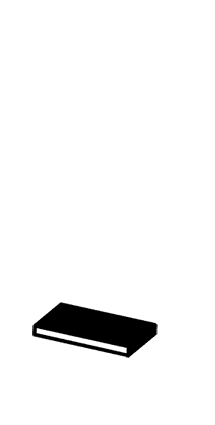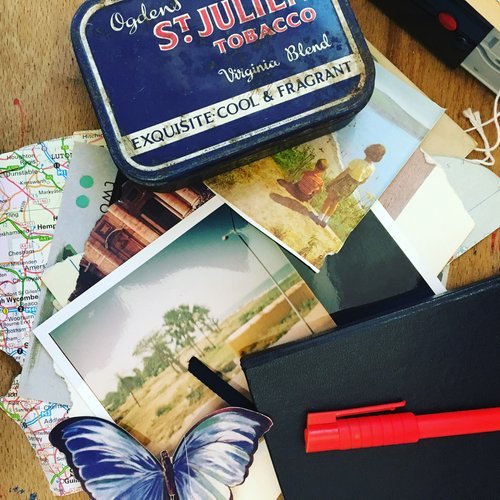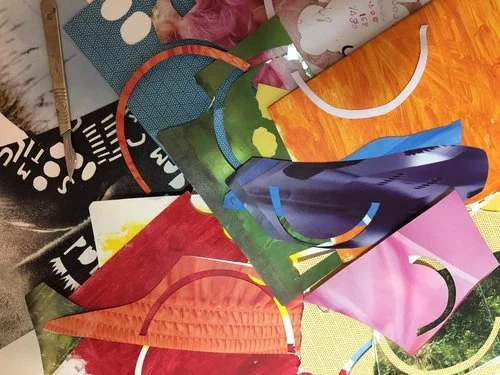The Art Of Collage
Hi, it’s Madeleine from Yoke. You may or may not know that I began my creative career as an Illustrator. I studied at Middlesex University, the course was broad and covered lots of aspects of image-making - introducing us to printmaking and animation too. It was an important time to experiment with different mediums and really find our visual voice as Illustrators.
Some Illustrators even have a range of styles they like to work in, but I found my strength and passion in collage. I’ve always loved a bit of charity shopping and bargain hunting, so browsing second hand shops for material was (and still is!) one of my favourite things to do. Retro tinted photographs, old postcards and vintage magazines are a few of the things I began to collect to build up my collection to work with. The most important thing to remember about using found imagery for your commercial illustration is copyright. The material needs to be old enough that the copyright no longer applies, or is something that is free for public use. If you’re unsure about this, the best thing to do is either take your own photographs or use digital imagery that is copyright free. There’s a huge selection of websites that provide this service, you can also buy packages of ready-to collage images that have commercial licences. There’s some amazing resources out there and they save a lot of stress! I often just use sections of images for their textures too, so not always using the complete image but creating my own instead.
My style of illustration has developed from 100% handcut (using a 10a medical scalpel) to a combination of digital and handcrafted. The reasons for this are -
Speed - Simply, it’s far quicker! I love taking my time to create a perfect piece of painstakingly cut collage, but often the client deadlines are tight and you need to work to a quick turnaround.
Process - Having your collage made into separate layers is crucial when working for a client. There will be amends and tweaks that need to happen so all artwork needs to be easily interchangeable. Scanning your work in and assembling it together on Photoshop is by far the best way if you want to keep your process handmade.
Online - We’re used to primarily viewing art on a screen, whether it’s sharing a new piece on your socials or designing for a digital client. The crisp, clean finish of digital art is something that is hard to compare to. So, a careful balance has to be made to keep a handmade ‘human touch’ to a mixed media illustration - whilst making sure it translates well online next to other Illustration styles. It all needs to look polished and work well across different media - printed and online.
One of my vintage tins I store my scalpel blades in, with a selection of collage papers & my own photographs. I used my old polaroid camera to capture some great tones.


